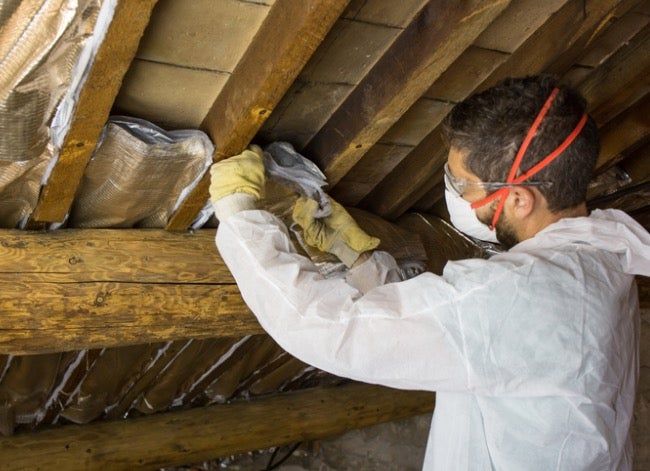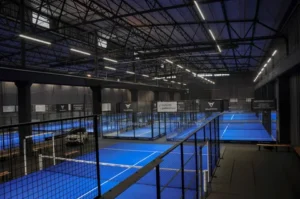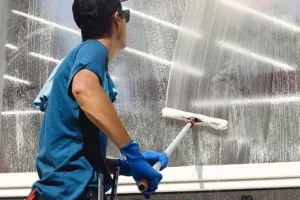5 Insulation Upgrades That Lower Energy Costs for Nevada Businesses
Nevada businesses can reduce energy costs by 20-40% through strategic insulation upgrades targeting roof/ceiling systems, exterior walls, HVAC components, windows/doors, and floor/foundation areas. These improvements address the unique challenges of Nevada’s extreme climate while delivering measurable ROI through decreased utility bills, improved equipment efficiency, and extended building infrastructure lifespan.
Each upgrade offers specific benefits with varying insulation installation requirements and payback periods, making them suitable for different commercial settings. Understanding the options, implementation considerations, and expected returns helps business owners make informed decisions that align with their budget constraints and long-term operational goals.
Top Insulation Upgrades For Commercial Buildings
1. Roof and Ceiling Insulation Systems
Roof and ceiling upgrades offer the greatest energy savings potential for most Nevada businesses, as up to 30% of conditioned air escapes through these areas in poorly insulated buildings.
| Insulation Type | R-Value per inch | Installation Method | Best For | Estimated Cost (per sq ft) | Energy Savings Potential |
|---|---|---|---|---|---|
| Spray Foam (Closed Cell) | 6.0-7.0 | Direct application | Flat roofs, metal buildings | $1.70-$3.25 | 25-35% |
| Rigid Board | 4.0-6.5 | Mechanically fastened | Drop ceilings, new construction | $1.20-$2.00 | 20-30% |
| Reflective Systems | 3.5-6.0 | Layered installation | Buildings with high solar gain | $1.00-$1.70 | 15-25% |
| Blown-In | 2.2-4.0 | Pneumatic installation | Accessible attic spaces | $0.80-$1.50 | 15-25% |
Bonus Tip: Combining a reflective roof coating with appropriate insulation can boost energy savings by an additional 10-15% in Nevada’s sun-intensive climate, especially for buildings with large, flat roof areas.
According to recent market data, Nevada commercial properties that upgrade to high-performance roof insulation systems reduce cooling costs by an average of 27% during summer months, which typically account for 60-70% of annual HVAC expenses.

2. Wall Insulation Solutions
Exterior wall insulation improvements address substantial energy loss while enhancing building envelope performance:
| Application Method | Disruption Level | Best For | Performance Characteristics | Installation Time |
|---|---|---|---|---|
| Injection Foam | Minimal | Existing buildings with empty wall cavities | Fills voids, stops air movement | 1-3 days |
| Exterior Continuous Insulation | Moderate | Buildings needing exterior renovation | Eliminates thermal bridging | 1-3 weeks |
| Interior Spray Foam | Moderate | During remodels, tenant improvements | High R-value, air sealing | 2-5 days |
| Furring with Rigid Board | Significant | Major renovations | Control layer integration | 1-2 weeks |
When properly implemented, wall insulation upgrades reduce heating and cooling loads by 15-25% in typical Nevada commercial buildings, with higher savings in older structures built before modern energy codes.
3. HVAC Component Insulation
Insulating HVAC systems delivers immediate efficiency improvements:
| Component | Insulation Type | Energy Loss Without Insulation | Cost Range | Payback Period |
|---|---|---|---|---|
| Ductwork | Fiberglass with foil facing | 20-40% of conditioned air | $8-$15 per linear ft | 1-2 years |
| Pipes | Elastomeric foam | 10-25% of thermal energy | $5-$10 per linear ft | 6-18 months |
| Mechanical Equipment | Custom blankets | 10-20% of operating efficiency | $200-$600 per unit | 1-3 years |
| Air Handlers | Multi-layer systems | 5-15% of processing efficiency | $300-$800 per unit | 1-2 years |
HVAC component insulation is particularly valuable in Nevada’s extreme climate, where system efficiency directly impacts business operating costs and equipment longevity.
4. Window and Door Treatments
Enhanced window and door insulation addresses a major source of energy loss:
| Treatment | Energy Savings | Installation Complexity | Best Application | Expected Lifespan |
|---|---|---|---|---|
| Window Films | 10-30% | Low | South/west facing windows | 10-15 years |
| Thermal Curtains | 10-25% | Low | Large window areas | 7-10 years |
| Door Sweeps/Weatherstripping | 5-15% | Low | All exterior doors | 2-5 years |
| Vestibules/Air Curtains | 15-30% | Medium-High | High-traffic entrances | 15+ years |
Bonus Tip: For Nevada businesses, installing high-performance window films on east, south, and west-facing windows can reduce cooling costs by up to 30% during summer months while protecting merchandise and interiors from harmful UV exposure.
5. Floor and Foundation Insulation
Often overlooked, floor insulation delivers significant comfort and efficiency benefits:
| Floor Type | Recommended Insulation | R-Value Range | Energy Impact | Cost-Benefit Ratio |
|---|---|---|---|---|
| Concrete Slab | Perimeter rigid foam | R-10 to R-20 | 5-10% energy savings | Medium |
| Raised Floor | Spray foam or batts | R-19 to R-30 | 10-20% energy savings | High |
| Basement | Rigid board or spray foam | R-10 to R-15 | 10-15% energy savings | Medium-High |
| Crawlspace | Encapsulation system | R-13 to R-19 | 10-20% energy savings | High |
Floor insulation improvements significantly reduce employee comfort complaints and provide more consistent temperatures throughout ground-level spaces.
Performance Comparison of Insulation Upgrades
The following table compares key performance metrics for the insulation upgrades:
| Upgrade Type | Cost Range (per sq ft) | Energy Savings | Disruption Level | Payback Period | Maintenance Requirements |
|---|---|---|---|---|---|
| Roof/Ceiling | $1.00-$3.25 | 15-35% | Low-Medium | 2-4 years | Low |
| Walls | $1.25-$4.00 | 15-25% | Medium-High | 3-6 years | Very Low |
| HVAC Components | $5-$15 per linear ft | 10-40% | Low | 0.5-3 years | Medium |
| Windows/Doors | $5-$25 | 5-30% | Low | 1-5 years | Medium |
| Floor/Foundation | $1.50-$5.00 | 5-20% | Medium-High | 3-7 years | Very Low |
Things to Consider Before Making a Decision
Building Assessment Requirements
Before selecting insulation upgrades:
- Conduct a professional energy audit with infrared scanning
- Analyze at least 12 months of utility data
- Identify specific thermal deficiencies and air leakage points
- Assess moisture control needs alongside insulation improvements
Business Operation Impacts
Consider how upgrades will affect day-to-day operations:
- Installation timeframes and business disruption
- Phasing options for budget management
- Noise and air quality during installation
- Access requirements for contractors
Climate-Specific Factors for Nevada
Nevada’s unique climate requires specific considerations:
- Significant daily temperature swings require responsive insulation systems
- Low humidity affects moisture management strategies
- High UV exposure impacts material selection and durability
- Seasonal extremes demand balanced performance year-round

Common Questions About Commercial Insulation Upgrades
How to Prioritize Multiple Insulation Needs
Start with a professional energy assessment to identify the largest energy losses. Typically, roof/ceiling insulation delivers the highest ROI, followed by HVAC components, walls, windows/doors, and floors. Prioritize upgrades that address your specific building’s deficiencies rather than following a generic approach.
Managing Business Disruption During Installation
Most commercial insulation upgrades can be scheduled during off-hours or weekends to minimize business disruption. Phasing improvements by area or floor also helps maintain operations. Work with contractors experienced in occupied commercial buildings who understand the importance of cleanliness, noise control, and minimal disruption.
Available Financial Incentives for Nevada Businesses
Nevada businesses can access several financial resources for insulation upgrades including NV Energy’s Commercial Energy Services Program, federal tax incentives through the Energy Policy Act, and Property Assessed Clean Energy (PACE) financing. A qualified energy consultant can identify current programs applicable to your specific situation.
FAQ
What is the typical return on investment for commercial insulation upgrades?
Most Nevada businesses see ROI within 2-7 years depending on the specific upgrades implemented. Roof/ceiling insulation and HVAC component insulation typically offer the fastest payback (2-4 years), while wall and floor upgrades generally take longer (3-7 years) but provide benefits for 15+ years.
How do insulation upgrades affect employee productivity?
Improved insulation creates more consistent indoor temperatures, reduces drafts, and minimizes hot/cold spots. Studies show productivity increases of 2-4% in properly insulated commercial spaces due to improved thermal comfort and reduced temperature-related complaints.
Can businesses remain operational during insulation upgrades?
Yes, most insulation improvements can be implemented with minimal disruption to operations. Many contractors offer after-hours or weekend installation, and upgrades can be phased by area to maintain business continuity. However, some extensive renovations might require temporary workspace adjustments.
Are there building code requirements for commercial insulation in Nevada?
Yes, Nevada has adopted the International Energy Conservation Code (IECC) with state-specific amendments. Commercial buildings must meet minimum insulation R-values based on climate zone. Additionally, renovation projects exceeding certain thresholds must bring insulation up to current code requirements.
How does proper insulation affect HVAC equipment lifespan?
Upgraded insulation significantly reduces HVAC system strain by decreasing runtime requirements and preventing temperature fluctuations. This typically extends HVAC equipment lifespan by 3-7 years and reduces maintenance costs by 10-20% annually.
Ready to Reduce Your Business Energy Costs?
Implementing strategic insulation upgrades offers Nevada businesses sustainable energy cost savings while improving building performance and occupant comfort. The five upgrade options outlined provide practical solutions for businesses seeking to control operating expenses and reduce environmental impact.
Contact Nevada Urethane today for a professional assessment of your commercial building’s insulation needs and discover which improvements will deliver the greatest return on investment for your specific situation.
Nevada Urethane (775) 500-0024 ihpfoam@gmail.com
Reviewer: Maria Lopez offered detailed feedback after reviewing this post. Her 10 years of experience in spray foam work helped guide the tone and suggestions toward realistic strategies.













